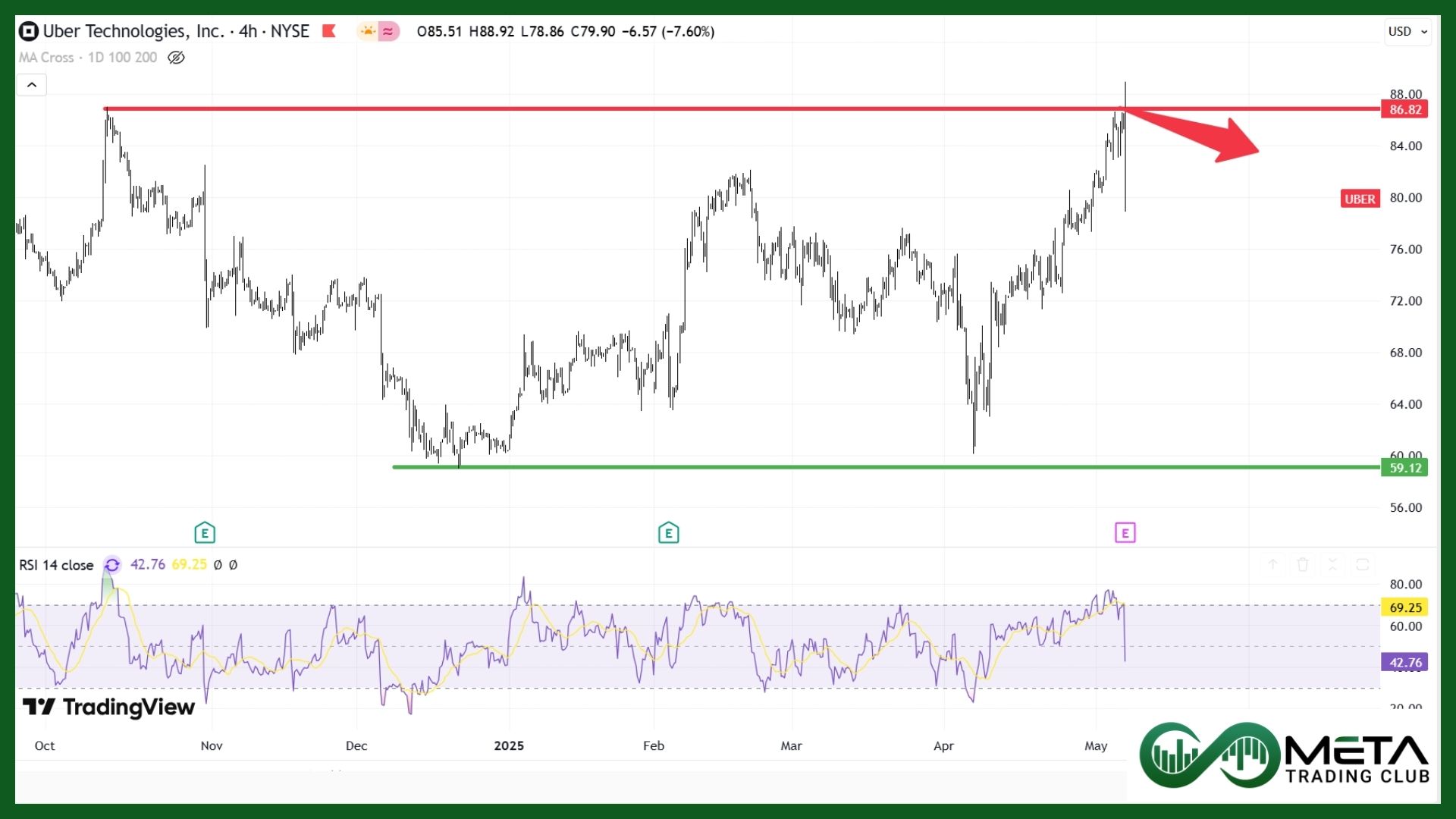Uber Technologies, started in 2009 by Garrett Camp and Travis Kalanick, is a big transportation company based in San Francisco, California. Uber changed the way people get around by creating a mobile app that connects passengers with drivers using their own cars. Over the years, Uber has expanded its services to include food delivery, package delivery, freight transport, and more, operating in about 70 countries and 10,500 cities worldwide.
Uber has over 150 million active users each month and 6 million drivers. The company arranges an average of 28 million trips per day. Also, Uber continues to grow and innovate, providing efficient, reliable, and accessible transportation solutions for people around the world.
Uber Fiscal Q1 2025
Uber Technologies (UBER) announced its Q1 2025 results, showing 14% revenue growth, though it missed expectations. However, earnings per share 0f $0.83 exceeded estimates, and trips increased by 18% during the quarter.
Highlights:
- Trips increased 18% from last year, reaching 3 billion, supported by 14% growth in active users and more frequent trips per user.
- Gross Bookings rose 14% to $42.8 billion.
- Revenue climbed 14% to $11.5 billion.
- Income from operations surged to $1.2 billion, up $1.1 billion year-over-year.
- Net income totaled $1.8 billion, including a $51 million benefit from revalued equity investments.
- Adjusted EBITDA grew 35% to $1.9 billion, with margins improving from 3.7% to 4.4% of Gross Bookings.
- Cash Flow: The company generated $2.3 billion in free cash flow and ended the quarter with $6 billion in available cash and investments.
Outlook
For the second quarter of 2025, the company expects Gross Bookings between $45.75 billion and $47.25 billion, reflecting 16% to 20% year-over-year growth. However, currency fluctuations may slightly impact reported growth, including a 3-percentage point headwind for Mobility.
Adjusted EBITDA is projected to range from $2.02 billion to $2.12 billion, representing 29% to 35% year-over-year growth.
Boards Statements
CEO Dara Khosrowshahi highlighted the company’s strong start to the year, reporting another quarter of profitable growth at scale, with trips increasing by 18% and user retention improving further. He attributed this success to the continued strength of the core business, emphasizing the company’s commitment to future expansion, including five new autonomous vehicle announcements within the past week.
CFO Prashanth Mahendra-Rajah reported over $2 billion in quarterly free cash flow, noting that the company has multiple levers to drive industry-leading cash flow growth. He reaffirmed the company’s focus on disciplined capital allocation to ensure long-term financial stability and confirmed progress in achieving its multi year strategic plan.
Impact on the Stock Market
Uber’s stock dropped 3% despite strong Q1 2025 earnings for a few reasons. Revenue and gross bookings were slightly below expectations, disappointing investors.
Even though the company gave a positive outlook for Q2, some expected stronger forecasts. Economic worries and consumer spending concerns may have played a role. Additionally, while ride-hailing and delivery grew, freight revenue declined, raising concerns about that part of the business.














